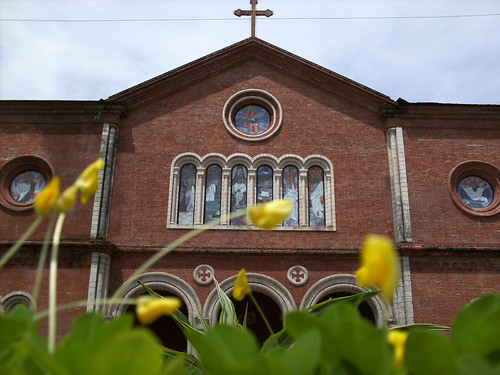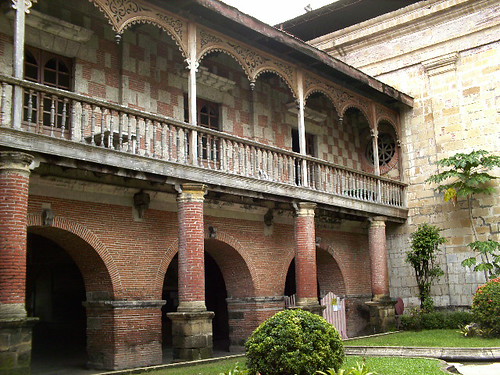Santa Monica Church,
Finished in 1899, of red bricks and coral stone furnishing,the beautiful three nave church of Pavia was built through the advocation of Santa Monica. The overall design is purely of byzantine architecture. It is architecturally distinct since most churches in Iloilo are of Baroque or Neoclassic styles.There is a copperative symmetrical movement on the facade brought by the complimenting effects of the rose windows and the arch entrances. The semi circular apse of the church completes its overall Romanesque design.
In World War II, like any other churches, Pavia Church served as a fortress protecting the people from the Japanese Army. before its restoration, bullet marks were still visible on its walls.
Santa Barbara Church and Convent,
Formerly called Catmon, Santa Barbara was made an independent parish in 1760 under the advocation of Santa Barbara Virgin y Martir. The present religious structure was built in 1855 and was finished in 1878.Under the Tuscan Order, the facade is given a baroque drift by graceful broken arches and ornate finials crowning its facade. The three-storey affair of the facade is brought by an extravagant and excessive use of cornices and niches.
The convent of Santa Barbara is the cradle of Iloilo's Revolutionary government since it was made the headquarters of Gen. Martin Delgado, who struggled the odds to free Iloilo from the grasp of the Spaniards. It was successfully restored on the town's 220th anniversary. The convent is an example of Hispanic Moorish(Mudejar) architecture. A design commonly seen in Southern Spain. Today, both the church and the convent are declared as National Heritage Sites.
San Nicolas Tolentino Church,




No comments:
Post a Comment